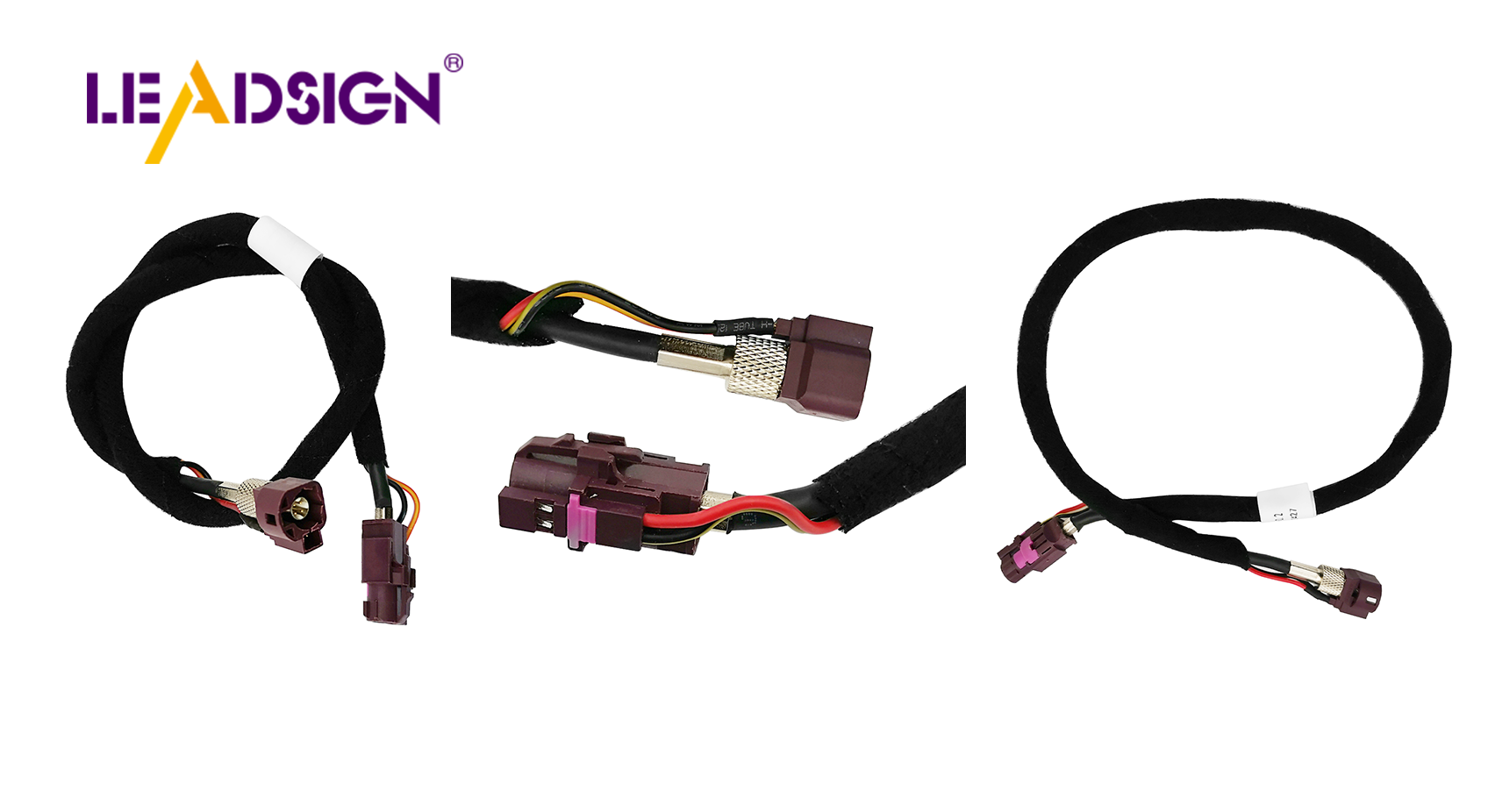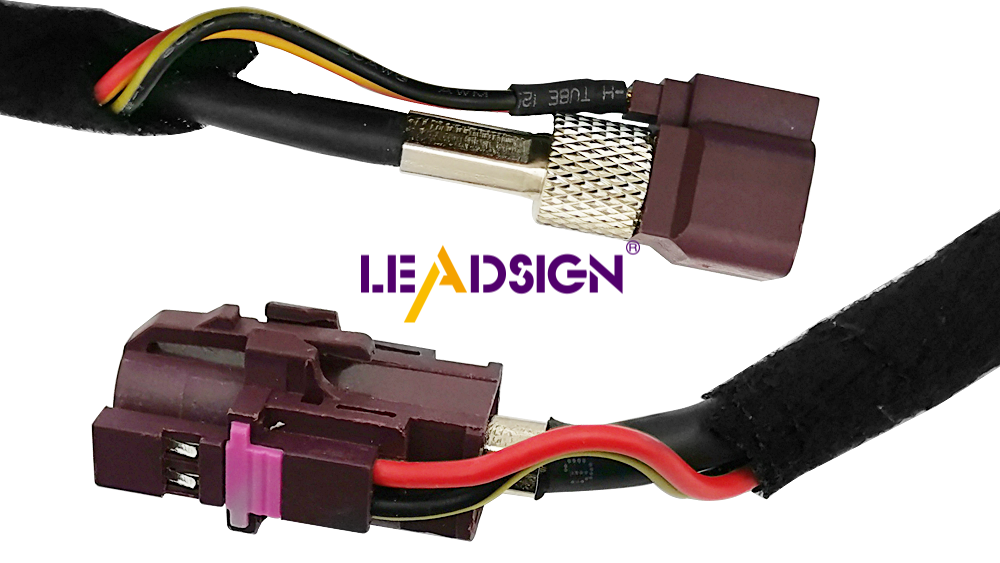The Story Behind Auto Harness Connectors’ Efficiency

Auto harness connectors are important parts of car electrical systems. They link wires together and keep them secure for smooth power flow. These connectors stop problems like rust, damage, or short circuits. This helps the car work without interruptions. They also support safety features like airbags and ABS. This keeps the car running well and protects passengers.
Key Takeaways
Auto harness connectors help keep electrical connections in cars safe. They allow power to flow smoothly and stop problems like rust or short circuits.
Strong materials and clever designs make these connectors better. They improve car safety and help systems like airbags and driver-assist tools work well.
These connectors are made to handle tough conditions. They are water-resistant and tested to work in bad weather and hard environments.
Understanding Auto Harness Connectors

What Are Auto Harness Connectors?
Auto harness connectors are special parts that join car wires. They help electrical systems work smoothly by keeping connections secure. These connectors are key for systems like ECUs, airbags, and ABS. They stop problems like loose wires or signal issues, improving safety and performance.
In cars, different connectors do different jobs. For example:
Wire-to-wire connections join two wires for small tasks.
Board-to-wire connections link circuit boards to wire systems.
Device connections attach sensors to ready-made parts.
These connectors also support tech like music systems, maps, and fast data sharing. This makes them very important in today’s cars.
Key Parts of Automotive Electrical Connectors
Car connectors have several main parts, each with a job to do. The table below shows these parts:
Part | What It Does |
|---|---|
Contacts | The main pieces that connect wires, usually male and female ends. |
Shell | The outside cover that protects and keeps everything in place. |
Insulators | Bases that hold the contacts and stop electricity from leaking. |
The materials used for these parts affect how well they work. For example:
Plastic shells are light and strong, great for most cars.
Metal shells are tougher, used in heavy-duty vehicles like tractors.
Contact materials like copper, silver, or gold resist rust and carry electricity well.
Strong materials and smart designs make these connectors work well in tough conditions.
How Automotive Connectors Work
Connection Mechanism in Auto Harness Connectors
Car connectors make safe electrical links using a step-by-step process. First, the right connector is chosen for the wire and job. Wire ends are cut to the right length, removing insulation carefully. A crimping tool attaches terminals tightly to the wire ends. These terminals are placed into the connector housing, clicking into place when aligned.
To keep them strong, single wire seals block dirt and water from each wire. Block seals protect groups of wires, and unused spaces are filled with plugs. After putting everything together, tests and checks make sure the connections work well. This careful process helps connectors handle tough conditions and keep the car’s electrical system running smoothly.
Integration with Automotive Systems
Car connectors help different systems in vehicles work together. They move power and data between parts, which is needed for advanced features like driver-assist systems. Modern cars have many wires and connectors—some with 40 harnesses, 700 connectors, and over 3,000 wires.
These connectors keep systems like music, maps, and self-driving tech working without problems. They also manage energy in electric and hybrid cars, helping parts share power. By connecting everything, they make sure the car runs well and stays reliable.
Technical Details of Car Connectors
Materials and Strength
Car connectors use special materials to last and work well. Most have plastic or metal covers. Plastic is light and strong, great for regular cars. Metal is tougher and used in big machines like tractors.
The main parts that connect wires are called contacts. They are often made from brass or bronze, which don’t rust and carry electricity well. Female contacts have flexible parts to hold wires tightly. Insulators, made from materials like PA66 or PBT, stop electricity from leaking and keep wires in place. These materials help connectors handle the tough needs of modern cars.
Power and Safety Standards
Car connectors must follow strict rules to work safely. They handle different amounts of electricity, from high power for engines to low power for signals. Hybrid and electric cars need connectors that can manage high voltage without wasting energy.
Global rules like ISO 6722 and SAE J2030 set the standards for making and testing connectors. These rules check for heat resistance, rust protection, and safety. By following these rules, makers ensure connectors work well in real-life situations.
Toughness and Dependability
Car connectors face hard conditions like heat, water, and shaking. To stay strong, they are made with durable materials and tight designs. Locks and seals keep out dust, water, and damage. Many connectors meet IP67 standards, meaning they block both dust and water.
Tests like heat and vibration checks make sure connectors can handle tough environments. Salt spray tests show how they resist rust over time. These tests and designs help connectors stay reliable in all kinds of vehicles, from regular cars to electric ones.
Efficiency of Auto Harness Connectors
Design Features That Improve Efficiency
Auto harness connectors help cars work better and last longer. Their smart designs make sure power and data move smoothly, even in tough conditions. Key features include:
High-quality materials: Strong metals improve electricity flow and stop rust.
Insulation materials: These keep out water, heat, and scratches, making them last.
Electromagnetic shielding: This blocks interference, keeping signals clear and steady.
Strain relief mechanisms: These stop wires from breaking due to shaking or pulling.
Design Feature | How It Helps |
|---|---|
Choice of materials | Improves electricity flow and keeps signals strong. |
Insulation materials | Protects from water, heat, and damage, lasting longer. |
Shielding for EMI | Blocks interference, keeping signals clear. |
Strain relief designs | Stops damage from shaking, making them more reliable. |
Managing heat is also very important. New connectors handle heat well, which helps during fast charging in electric cars.
New materials have made connectors smaller and lighter. This lowers car weight, saving energy and improving performance. These features help connectors meet the high demands of modern cars.
Reliability and Safety in Cars
Car connectors must be safe and dependable. They go through many tests to meet strict rules like ISO 9001 and IATF 16949. These tests check if they can handle heat, shaking, and wet conditions.
Test Type | Why It’s Done |
|---|---|
High Voltage Test | Checks if it can handle strong electricity. |
Insulation Test | Makes sure no electricity leaks out. |
Vibration Test | Ensures it stays secure when the car shakes. |
Temperature Variation Test | Tests if it works in very hot or cold weather. |
Moisture Resistance Test | Protects against rust and water damage. |
Safety features make them even better. Special oils stop wear and rust, keeping power and signals steady. These oils also block dirt, avoiding short circuits.
By following strict rules and adding safety features, these connectors keep important systems like ADAS and electric engines working well. They are key to making cars safe and reliable today.
Auto harness connectors are key parts in today’s cars. They keep electrical connections steady and secure. Strong materials and tight locks make them last long. Water-resistant designs help them work in tough weather. These connectors make cars safer and support smart systems like ADAS. They also help cars run better, protecting passengers and improving performance.
FAQ
What makes auto harness connectors efficient?
Strong materials and smart designs help them work well. Features like shielding keep power and data steady, even in tough conditions.
How do auto harness connectors improve vehicle safety?
They keep wires secure and stop short circuits. They also help systems like airbags and ABS work safely in all situations.
Can auto harness connectors handle extreme weather?
Yes, they use tough materials and tight seals. Their IP67 design blocks heat, water, and dust.
See Also
Boosting Data Transfer: Significance of Fast Automotive Connectors
Significance of HSD Connectors Within Automotive Applications
Uncovering Advantages of Fakra Connectors in Vehicles

